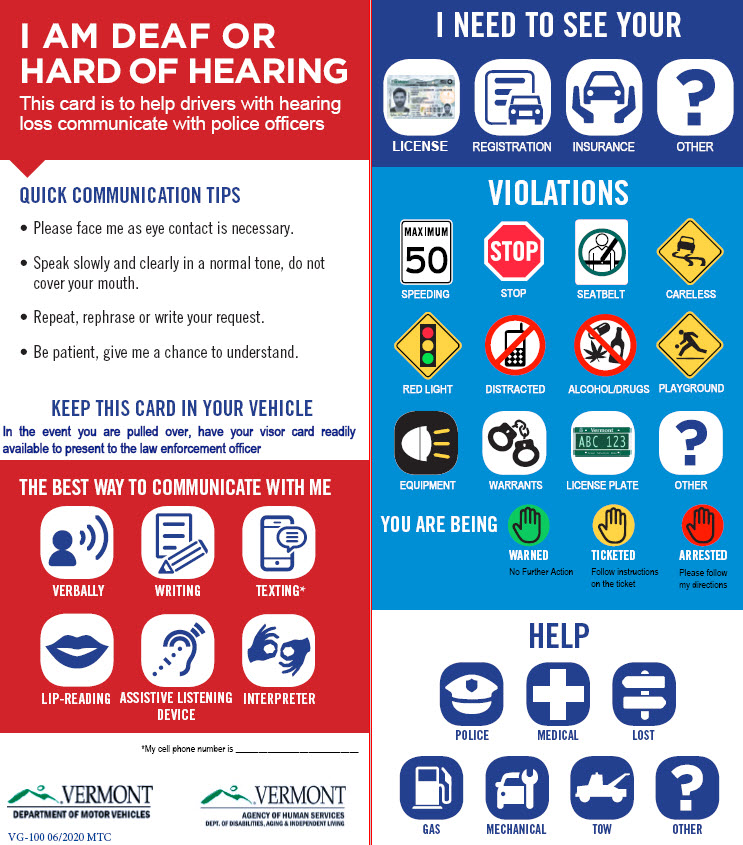
Vermont Business Magazine The Vermont Department of Motor Vehicles (DMV) has partnered with the Department of Disabilities, Aging & Independent Living (DAIL) and Vermont State Police (VSP) to create visor cards to help people who are deaf or hard of hearing communicate with law enforcement officers if they are pulled over while driving.
“This important project and inter-agency collaboration began with a request from a Vermont resident for our State to create and distribute visor cards similar to those used in other states,” said DMV Commissioner Wanda Minoli. “As the DMV continues to modernize, efforts like this to reach and accommodate all Vermonters are essential.”
Vermonters can now obtain the visor cards through the DMV, and VSP is in the process of giving a visor card to every state trooper.
“We know that better communication leads to better outcomes,” Public Safety Commissioner Michael Schirling said. “The Vermont State Police always strives to communicate clearly, effectively, and professionally with everyone who is pulled over or needs assistance along Vermont’s roadways, and these new visor cards will enhance those efforts with our deaf and hard-of-hearing motorists.”
The creation of the cards was a collaborative effort, with DAIL and VSP providing important feedback to the DMV about how to word and design the card for optimal effectiveness and to ensure that the language and tone were appropriate.
“It is critical that communication between individuals who are deaf or hard of hearing and state and local law enforcement is clear and effective. I am grateful for the partnership with DMV and VSP to bring the visor card to Vermont and grateful to the members of Vermont’s Deaf, Hard of Hearing, and DeafBlind Advisory Council for their initiative in raising this concern,” said DAIL Commissioner Monica Caserta Hutt.
The 4”x9” cards state clearly at the top, “I am deaf or hard of hearing. This card is to help drivers with hearing loss communicate with police officers.” There are tips for how officers should communicate with the cardholder, followed by options that cardholders can point to indicating how best to communicate (writing, texting, lip-reading, etc.) with them. On the back, there are graphics with one-word labels that officers can point to under “I need to see your” (license, registration, insurance, other) and “Violations.” The last section is “Help” and lists options for cardholders to show the officer what they need (medical, lost, tow, etc.).
To obtain a visor card;
- Please complete the online contact form and request to have a visor card (DMV form # VG-100) mailed to you.
- Call 802.828.2000 and request to have a visor card (DMV form # VG-100) mailed to you.
- Once our offices re-open, visit any location to obtain one.
Source: DMV 4.6.2021

